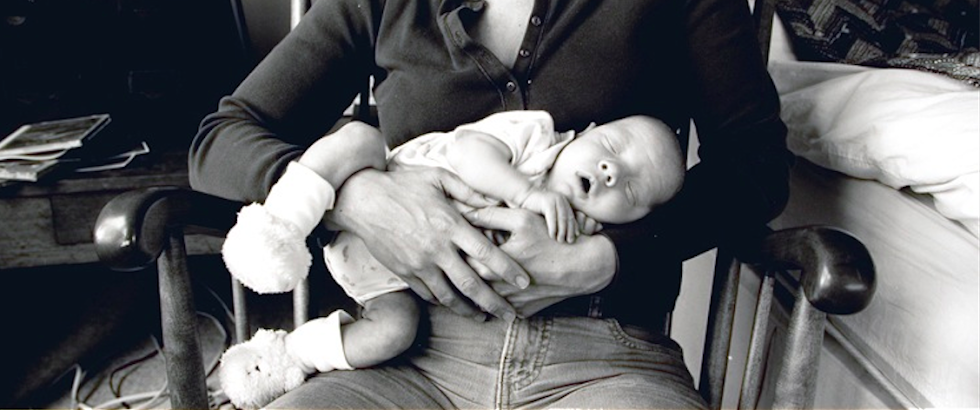Written by Tracy Dixon Salazar, Savannah's mom
I remember the first seizure vividly. I awoke to the sound of choking coming from the room of my two-year-old daughter, Savannah. I entered to see her tiny little body jerking about violently in her bed. My husband and I didn’t recognize this as a seizure—we thought she was choking. I’ll never forget the words of the paramedic that night who said, “Her airway is clear, but what you just described sounds just like a seizure.” That was our harsh induction into the world of epilepsy. Living in that world has been equally harsh.
I remember the first seizure vividly. I awoke to the sound of choking coming from the room of my two-year-old daughter, Savannah. I entered to see her tiny little body jerking about violently in her bed. My husband and I didn’t recognize this as a seizure—we thought she was choking. I’ll never forget the words of the paramedic that night who said, “Her airway is clear, but what you just described sounds just like a seizure.” That was our harsh induction into the world of epilepsy. Living in that world has been equally harsh.
Savannah’s seizures worsened despite treatment. By age three, she was having multiple types of seizure and had to wear a helmet. By age four, she began to have clusters of seizures that would last for hours unless drug intervention was used. By age five, she was seizing dozens of times a day, and delays in her development were becoming apparent. Savannah was diagnosed with Lennox-Gastaut Syndrome, a severe epilepsy with a poor prognosis. Despite dozens of tests though, no cause for Savannah’s seizures was ever found, and with no family history or precipitating event, we were mystified.
It has been devastating to watch what epilepsy has done to my child. With over 35,000 seizures in seventeen years, it has definitely left its mark. At twenty, Savannah is the developmental age of a five year old. Her face bears the scars from falls caused by seizures, and her heavy eyes tell of the medications she takes to “control” them. Due to these medications, she drools incessantly, is frequently constipated, has overgrown gums, staggers like a drunk, struggles to find words, and sports a not-so-feminine mustache. The first thing I do every morning before getting out of bed is place my hand on Savannah to see if she’s breathing. With frequent tonic-clonic seizures during sleep, I fear that one will claim her life, and one day she will be gone.
Because of her developmental delays, Savannah doesn’t fully realize how her life is different because of epilepsy. She has a childlike happiness, with an infectious giggle and the most loving soul I’ve ever met. But I know, and it torments me. She will forever be dependent on others for her well-being, and is prone to being taken advantage of by the dishonest. She must continue to take anticonvulsants despite side effects, because the alternative is much worse. She will continue to miss out and be excluded because of unrelenting seizures. And I will continue to live in fear of her death, but I expect that I will see it in my lifetime. What I want more than anything is a cure.
Sadly, there is no cure for Savannah. Perhaps, with maturity, she may stop seizing one day, but the damage is done. If only there had been something to help her in the beginning. My hope is that someday other children with epilepsy and their families won’t have to live the ordeal that we have, and so I’ve chosen a career as a researcher.
During those early years of seizures and utter confusion, I began to read all I could about epilepsy. The papers I was reading were too advanced and I thought I needed to go to college to take some English classes. But, I soon learned that it wasn’t English I needed, but science. So I took my first science course and became completely enamored with the subject. I attended classes while my children were at school, and stayed up late to study.
Fifteen years later, I have a PhD in neurobiology and am an epilepsy researcher.
As both a mom and a scientist, I have a great respect for CURE. An organization that recognizes the ravage of epilepsy and takes an active role in the search for help, CURE has inspired hope among parents and dialogue among researchers about curing this exasperating disorder. CURE’s impact has, thus far, been significant, and I am honored to be a part of this group.
Update: About 18 months ago, things changed. We learned that Savannah had genetic mutations in numerous calcium-channel genes and we knew from previous experience that calcium supplements made her seizures increase substantially. Therefore, her doctor wondered if using a calcium-channel blocker might help her... and it did. For over two years Savannah would go into non-convulsive status epilepticus every 2-3 days and would require rectal diazepam to stop these non-stop seizures. In the last 18 months, Savannah has only needed emergency rectal medication 3 times. We are amazed! For the first time in more than 15 years, a medication is helping stop Savannah’s seizures. We are cautiously optimistic that our days of recurrent status epilepticus are behind us and we are hopeful that perhaps trying other types of calcium channel blockers will one day make her seizure-free. If you’re going to dream, dream big!
 |
| Savannah with her seizure-alert companion, Yukon |

Wild, wild story. Thank you for posting. And Savannah is beautiful.
ReplyDelete